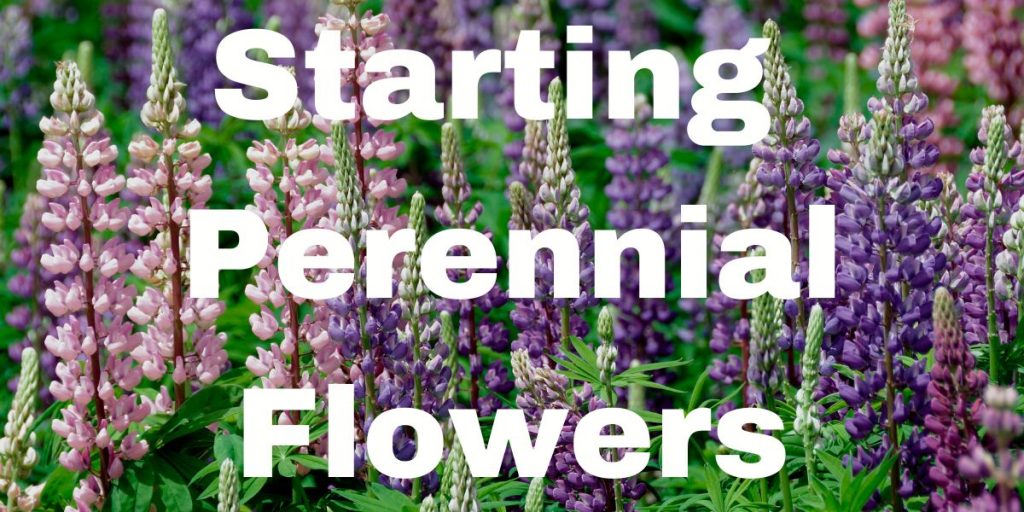June and July are excellent months to start perennials and biennials from seed. The warmer soil temperatures at this time of year encourage faster germination of seed and quicker development of plants. A small investment in a packet of biennial or perennial flower seeds will often provide up to one hundred or more starter plants.
What is an annual, biennial and perennial?
An annual is a plant that grows, flowers and dies during one season.
A perennial is a plant that continues to grow and flower more than two years (the top growth of some perennials dies back each year, while others maintain foliage year-round).
A biennial is a plant that completes its life cycle in two years.
Among the most popular biennials started from seed at this time of year are: Sweet William, hollyhocks, foxglove, wallflower, forget-me-nots, pansies, snapdragons and Canterbury bells.
Perennials offer both permanence and, by proper selection, flower colors that span the color spectrum. Many of the rockery perennials may be started from seed at this time of year. They include: golden alyssum (basket of gold), English daisy, aubrietia, arabis (snow-on-the-mountain), candytuft, and armeria. The taller growing perennials include: hardy carnations, dusty miller, lupines, tritomas, columbine, phlox, geum, babysbreath, primroses, poppies and delphinium.
Germinating Perennials
Many of the seeds of biennials and perennials are hard-shelled and sometimes difficult to germinate. The process of nicking or filing through the outer hard shell has been used for years in assisting in germination. Today, one of the most convenient methods to aid in seed germination is that of freezing the seed. Freezing has many advantages, as it helps the seeds germinate more rapidly, easily and more evenly. Simply use the ice cube tray from your refrigerator for this process. Fill the tray half-full of water, then freeze. Remove the tray when it is frozen. Scatter the seeds on top of the ice cubes, leaving the tray out until the cubes begin to thaw. Then fill the tray with water and put it back in the refrigerator to freeze again. This process will encase the seeds in ice. Seeds treated in this manner should remain in the freezer for at least two days, after which time they are ready to be thawed and planted.
The seeds can be started in pots, milk cartons, trays, and flats or in an unused portion of the flower garden.
Prepare the soil well, mixing in ample amounts of peat moss, compost, sand and sandy loam for good drainage. The soil and planting area should be completely free of insects and slugs. Soil sterilization can be accomplished, if desired, by baking in the oven for two hours at 180 degrees. Prepared potting mixes, already sterilized, are available at local nurseries and garden departments.
Sow the seeds in rows about two to four inches apart or scatter them evenly over the planting area, approximately one-half inch apart. Then press the seeds firmly into the soil. The next step is to barely cover the seed with a fine mixture of soil and peat moss. Then cover the seeded areas with newspaper or burlap watering through this cover. When germination has taken place, this covering must be completely removed.
Planting Perennials
In September or early October, the seedling plants will be ready to be planted into their permanent locations. Prepare the soil in these areas to a depth of eight to twelve inches. Make sure the soil is well drained. Perennials will not tolerate “wet feet” during the winter. Mix in ample amounts of peat moss, compost or leaf mold and some calcium, such as dolomite lime, marl or charcoal. Also, add bone meal or a well-balanced, low nitrogen, all-purpose fertilizer. I prefer a bulb-type fertilizer, low in nitrogen, for this purpose.
At transplanting time and throughout the growing season, the soil around perennials and biennials can be dusted with a complete insecticide-fungicide soil dust, to protect the seedlings from soil-borne insects and disease infestations.
Slugs can be controlled in perennial and biennial plantings with regular applications of either meal or liquid-type slug baits.
Perennial Flowers
-
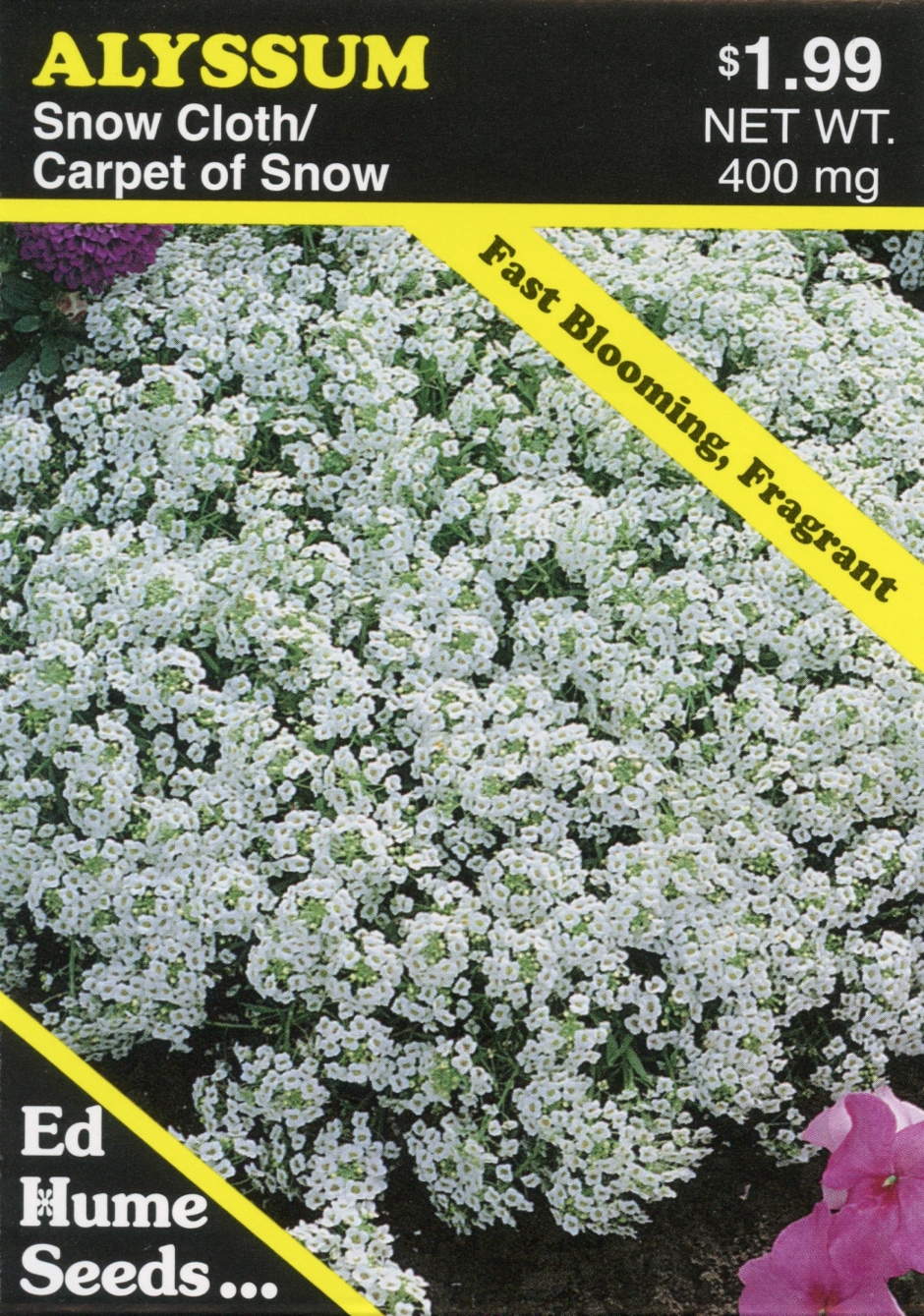 Alyssum – Snow Cloth/Carpet of Snow$1.99
Alyssum – Snow Cloth/Carpet of Snow$1.99 -
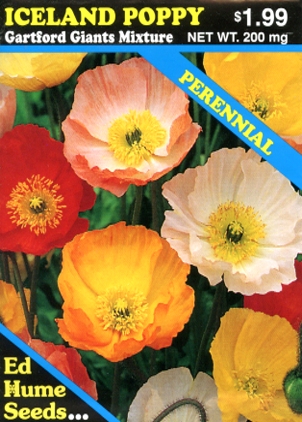 Iceland Poppy – Gartford Giants Mixture$1.99
Iceland Poppy – Gartford Giants Mixture$1.99 -
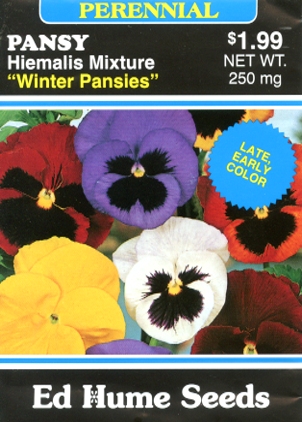 Pansy – Hiemalis Mixture, “Winter Pansies”$2.09
Pansy – Hiemalis Mixture, “Winter Pansies”$2.09 -
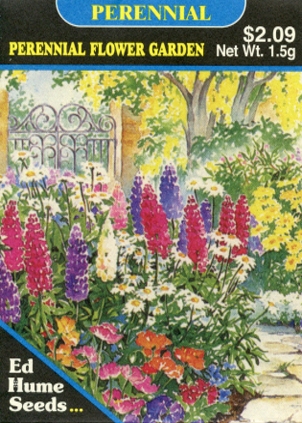 Perennial Flower Garden$2.09
Perennial Flower Garden$2.09 -
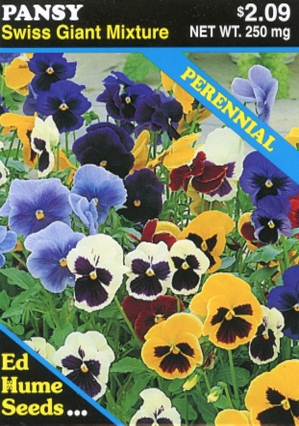 Pansy – Swiss Giant Mixture$2.09
Pansy – Swiss Giant Mixture$2.09 -
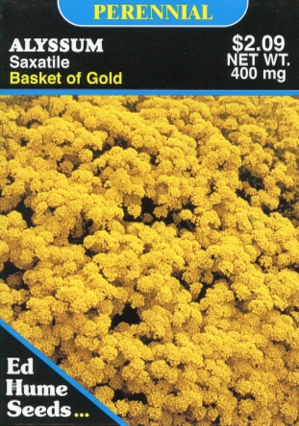 Alyssum – Basket of Gold$2.09
Alyssum – Basket of Gold$2.09 -
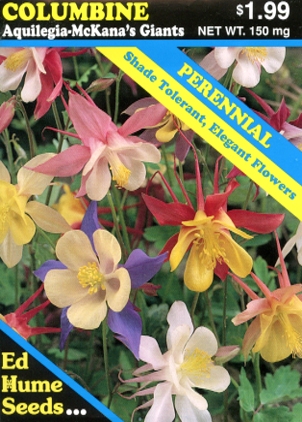 Columbine – Aquilegia, McKana’s Giants Mixture$1.99
Columbine – Aquilegia, McKana’s Giants Mixture$1.99 -
 Balloon Flower – Bellflower$2.09
Balloon Flower – Bellflower$2.09 -
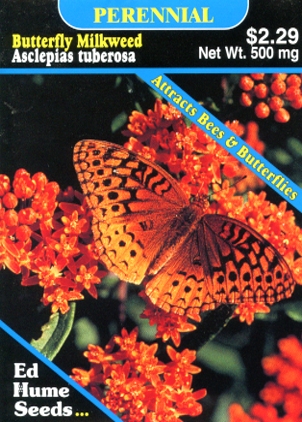 Butterfly Milkweed$2.29
Butterfly Milkweed$2.29 -
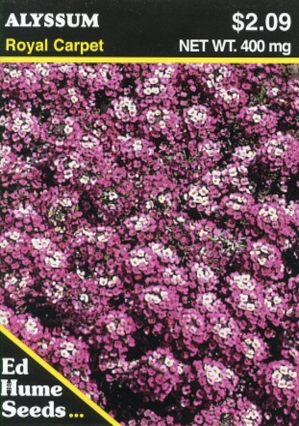 Alyssum – Royal Carpet$2.09
Alyssum – Royal Carpet$2.09 -
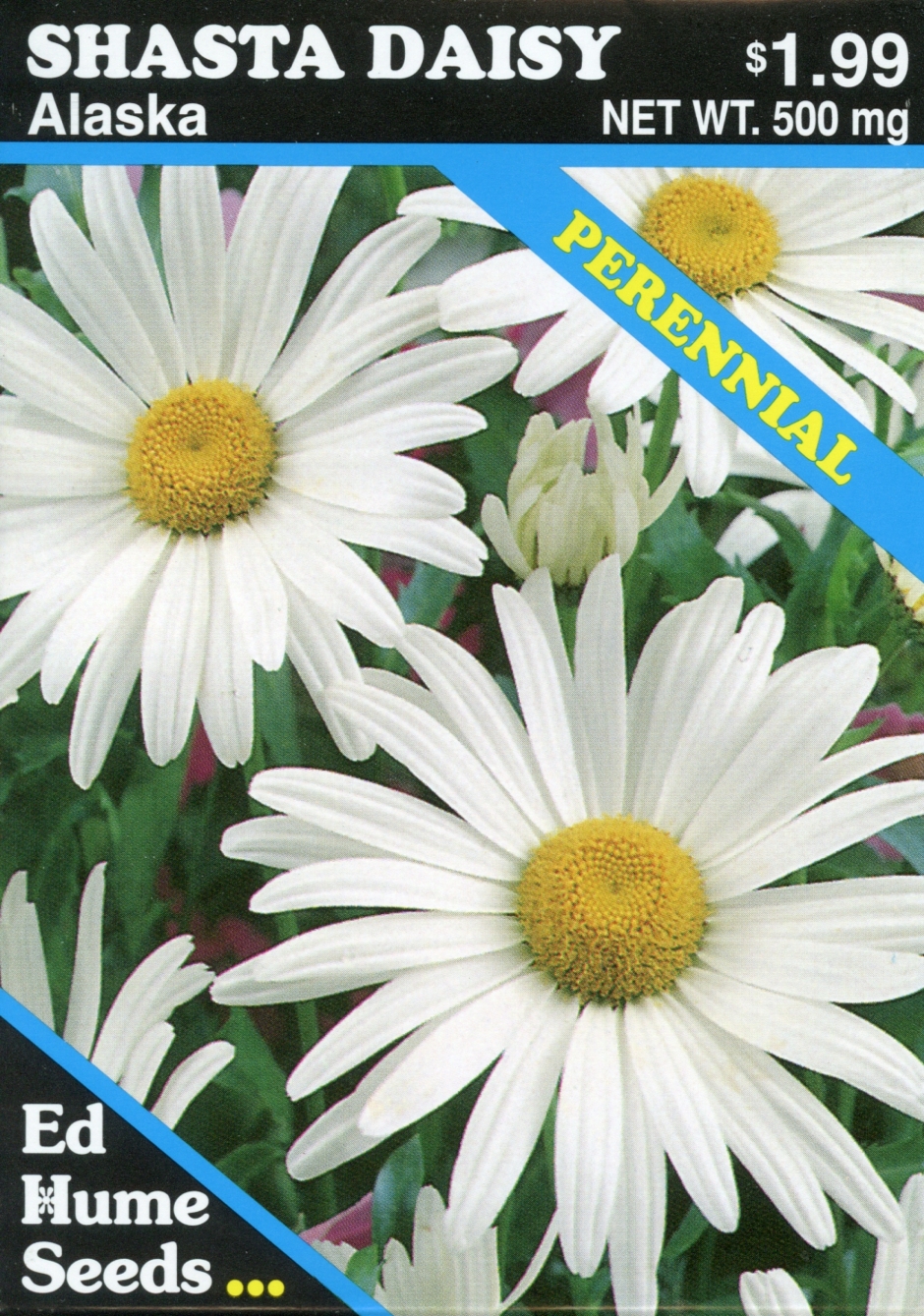 Shasta Daisy – Alaska$1.99
Shasta Daisy – Alaska$1.99 -
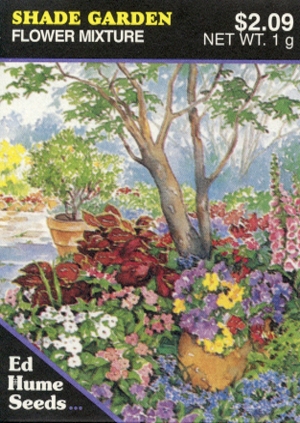 Shade Garden Flower Mixture$2.09
Shade Garden Flower Mixture$2.09 -
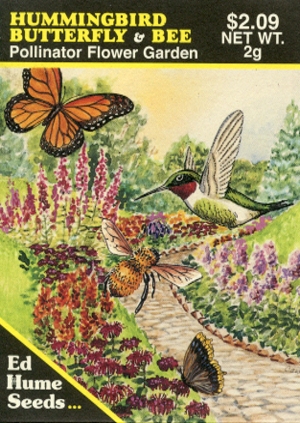 Hummingbird, Butterfly, and Bee Mix – Pollinator Flower Garden$2.09
Hummingbird, Butterfly, and Bee Mix – Pollinator Flower Garden$2.09 -
 Viola – Johny Jump Up$2.09
Viola – Johny Jump Up$2.09 -
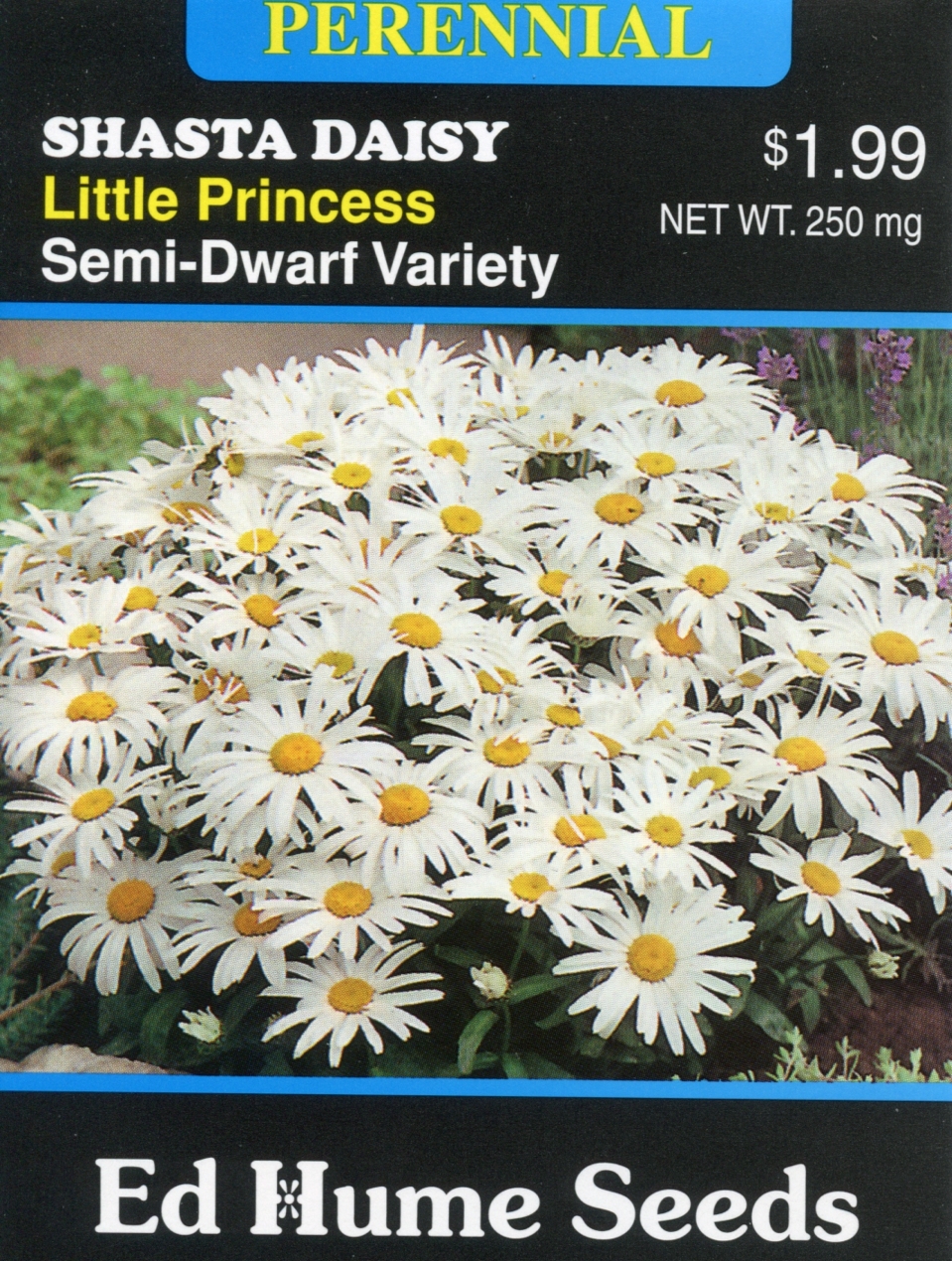 Shasta Daisy – Little Princess, Semi-Dwarf$1.99
Shasta Daisy – Little Princess, Semi-Dwarf$1.99 -
 English Daisy – Bellis perennis$2.29
English Daisy – Bellis perennis$2.29 -
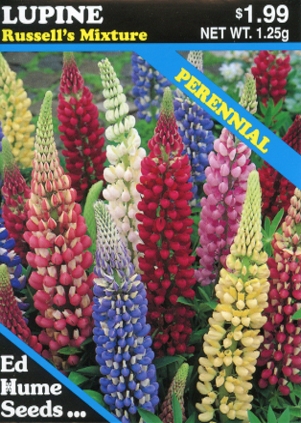 Lupine – Russell’s Mixture$1.99
Lupine – Russell’s Mixture$1.99 -
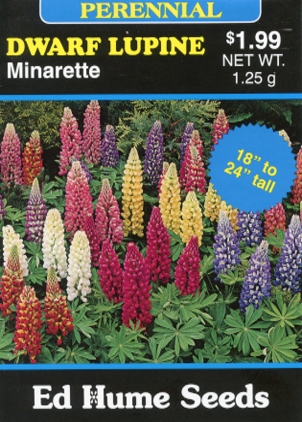 Dwarf Lupine – Minarette$1.99
Dwarf Lupine – Minarette$1.99 -
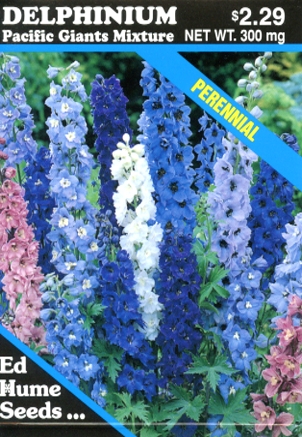 Delphinium – Pacific Giants Mixture$2.29
Delphinium – Pacific Giants Mixture$2.29 -
 Artichoke – Green Globe Improved$2.29
Artichoke – Green Globe Improved$2.29 -
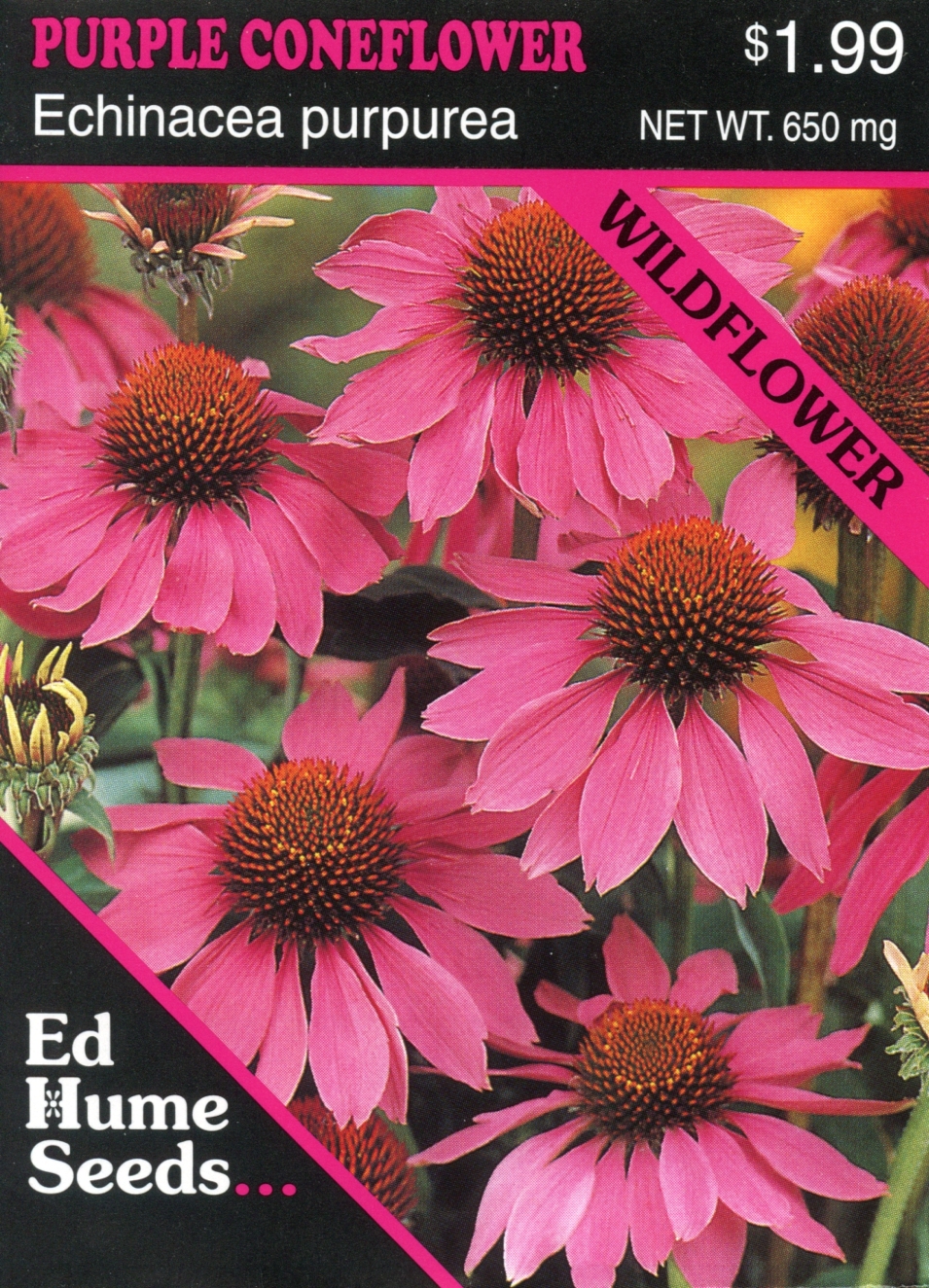 Purple Coneflower – Echinacea$1.99
Purple Coneflower – Echinacea$1.99
